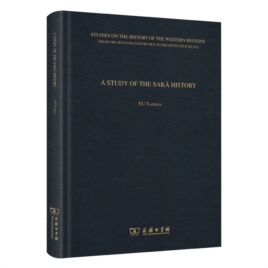INTRODUCTION TO THE SECOND EDITION —— “Sakā”, the Name A According to the History of Herodotus, Cyrus II [558-529 BCE] of the Achaemenid Empire planned to command in person the campaign against the Sacae who lay in his path. (I, 153) There is, in fact, no record of Cyrus’campaign against the Sacae in the whole book, but it does record the campaign against the Massagetae after his conquest of the Babylonians. (I, 201-204) Since in Herodotus’ History the Massagetae were not included among the block of nations targeted by Cyrus II, and the “Massagetae” could also be interpreted as being the “great Saca horde”, the “Sacae” against whom Cyrus II planned to campaign should have been the Massagetae. According to Herodotus’ record, the Massagetae lived to the east of the Sea of Caspia, “a plain that stretches endlessly to the eye”. (I, 204) The Sea of Caspia is the present-day Caspian Sea, and so the land of the Massagetae should have been located on the great plain to the north of the Caspian and Aral Seas, i.e., the northern bank of the Syr Darya. The Massagetae occupation of the northern bank of the Syr Darya was the result of the migration of nomadic tribes across the whole Eurasian Steppe before the end of the 7th century BCE. Herodotus recorded this migration based on various sources. In one section, he states that the Scythians were driven out by the Massagetae and “crossed the river Araxes into Cimmerian country”.(IV, 11) In another section, he writes that the Scythians were pursued by the Issedones, and so pressed the Cimmerians. (IV, 13) In fact, it is possible that the Issedones defeated the Massagetae, the latter defeated the Scythians, and the Scythians were forced into Cimmerian country. The pressure on the Scythians came indirectly from the Massagetae, and directly from the Issedones. Finally, the Scythians traveled to the shore of the Black Sea, and the Massagetae then lived to the north of the Syr Darya. The latter should have lived in the valleys of the Rivers Ili and Chu before they moved to the northern bank of the Syr Darya. According to Herodotus, the Massagetae lived “toward the east and the rising of the sun, beyond the River Araxes and opposite the Issedones”. (I, 201) Since the land of the Massagetae was located to the north of the Syr Darya, the land of the Issedones, whose land was opposite that of the Massagetae, should have been located in the valleys of the Rivers Ili and Chu. After the Massagetae had been driven from the valleys of the Rivers Ili and Chu by the Issedones, they moved to the northern bank of the Syr Darya. In sum, the name “Sacae” was first used by the Persians to designate the Massagetae who roamed around as nomads in the valleys of the Rivers Ili and Chu and later on the northern bank of the Syr Darya.





